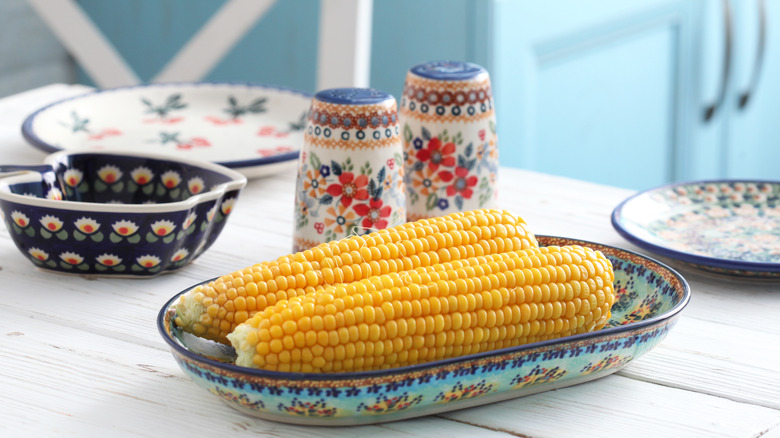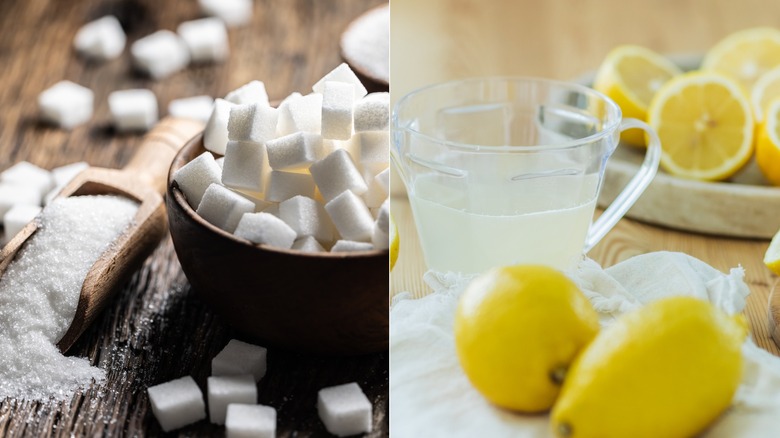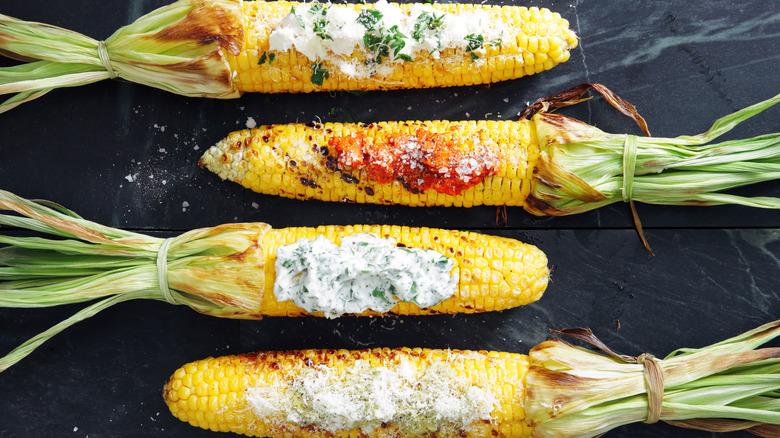The 2 Ingredients You're Missing For The Best Boiled Corn On The Cob
In 2023, America saw a bit of an upset. In an annual survey conducted by Green Giant, corn dethroned broccoli as the nation's favorite vegetable. It was the first time that broccoli had been booted out of the top spot, and really, it makes sense: corn is amazing in large part because it has a wonderful sweetness that's typically not associated with most vegetables. It's that sweetness that makes fresh corn on the cob so good, and while the canned and frozen stuff is fine, there's nothing quite like fresh-picked corn.
In order to eat corn when it's at its sweetest, it should be eaten within a week of harvesting. That's not always possible, though, and that brings us to our first must-have ingredient for truly stellar boiled corn — sugar. Add a little extra sweetness with sugar, and then? Use a dash of lemon juice to help the ears of corn hold their crunch.
Grilled corn on the cob is delicious, don't get us wrong. But there are plenty of nights when you just might not feel like firing up the grill, and in that case, boiling corn is a perfectly acceptable alternative — especially with these two simple additions that will take your corn on the cob to the next level.
Use sugar for sweetness, and lemon juice for crunch
Typically, boiling sweet corn takes just around ten minutes, and it's easy. Bring the water to a boil, turn off the heat, and let it work some serious magic. There's nothing that you'll need to do differently if you're adding sugar and lemon juice, which you should do at the very beginning. The boiling will dissolve the sugar, and that's all there is to it!
If you're boiling enough water for six ears of corn, a good place to start is by adding just two tablespoons of sugar and one tablespoon of lemon juice. Those quantities can be adjusted for different amounts of corn (Double for a dozen ears, for example).
What makes this the best-boiled corn? Corn naturally has a high sugar content, but as soon as it's harvested, those natural sugars start turning into starch. That's why week-old corn isn't going to be as sweet as the newly-picked ears, but adding sugar to the boiling water when you cook it gives it a little bit of a boost. As for the lemon juice, the acidity will help keep individual kernels firm instead of mushy, allowing taste and texture to come together for a truly amazing ear of corn — no grill required. There is one single thing that you should note, though. If you add salt — and you still can — do so at the end of the boil to prevent kernels from getting too tough.
There are other ways to upgrade your corn on the cob
Ears of fresh corn are a go-to during the summer months, and you can definitely freeze corn on the cob to enjoy through those long winter months, too. That's great news because there are so many ways to serve corn on the cob that there just isn't enough time in the summer to experiment with them all.
If you love that extra boost of sweetness that comes from boiling with sugar, you can also try boiling ears of corn in milk. That's another great way to add some flavor back into corn, and it just might give you a few more weekends where you can serve up this delicious veg.
As the season starts to wind down, corn on the cob can start to get a little bland. This is the perfect time to try these simple hacks, and there are a few other things you can do. Cooking your ears over high heat — either by charring them on the grill or leaving them in a 500 degree Fahrenheit oven for around half an hour — can help. Toppings that contain fats also work really well, and if you decide to go this route, reach for cheeses like queso fresco, or mayo, or butter. Serving corn on the cob with feta and herbs is exactly the idea you need for the end of the season, and if all else fails, use it as an ingredient in everything from salads to tacos.


